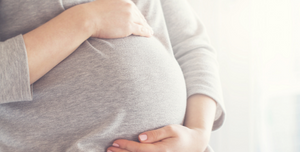How Do Birth Injuries to a Mother Occur?

In 2020, 861 women in the United States died of maternal causes. Despite continued medical advances, the number of pregnancy-related deaths has steadily increased since the Pregnancy Mortality Surveillance System was first introduced in 1987. Some of these deaths could not have been prevented with current medical knowledge and tools, but others were preventable with proper care or, tragically, were caused by the medical malpractice of healthcare providers.
Medical malpractice occurs when you are injured because your doctors, nurses, midwives, hospitals, or other healthcare providers do not meet the applicable standard of care. The standard of care requires that all healthcare providers act reasonably and diligently in the given circumstance when treating a patient. In medical malpractice cases, a healthcare provider can breach the duty of care owed to you by the actions that are taken, or by a failure to act. A birth injury to a mother can happen as a result of substandard care before, during, and after the delivery of her baby.
If you have questions about medical malpractice or a birth injury, the birth injury lawyers at Morris James can help. We support injured medical malpractice victims across Delaware, Pennsylvania, and Maryland, by investigating their care and bringing wrongdoers to justice. Contact us today online or call us at 302.655.2599.
Failures in prenatal care and screening
Lapses in care that may lead to maternal birth injuries can happen before a mother enters the delivery room. During pregnancy, an expectant mother typically has regular medical appointments, ultrasounds, and testing, to monitor her health and the health of her baby. If a medical provider misses known complications, or fails to provide appropriate care after a complication is detected, the expectant mother can be harmed. Examples of complications that can occur during pregnancy and can cause harm to the mother include:
Preeclampsia is often detected during routine prenatal screening by high blood pressure or proteinuria (high levels of protein in urine) and should be acted upon by your healthcare provider. When untreated, this condition can lead to a stroke, encephalopathy (cognitive problems), or even death. Although the only current treatment for preeclampsia is delivery of the baby, it can often be managed with bed rest and medication. Sometimes your doctor will induce delivery before your due date.
Failure to monitor the size and positioning of the child in utero can result in an unexpected high risk delivery and injury to the mother. For example, babies in a breech position may need to be manually re-positioned or delivered by C-section. A very large baby (a condition called fetal macrosomia) can increase the risk of genital tract tears and injuries caused by the baby becoming stuck in the birth canal. A large baby also increases the risk of uterine rupture, especially in a mother that has delivered previously by C-section. Your healthcare provider should be monitoring the size of your baby during your pregnancy and should be discussing the need for a C-section delivery or other options with you, especially when a baby is malpositioned or larger than expected.
Failure to detect and manage placental problems can be life-threatening to the mother and baby. Examples of issues with the placenta include placenta previa (when the placenta blocks some or all of the cervix), placenta accreta (when the placenta expands too far into the uterus), or placental abruption (when the placenta partially detaches from the uterus wall). These are all serious conditions that can lead to hemorrhaging, organ failure, a complicated delivery, and other problems. Placental issues may also indicate the need for a C-section delivery, medication, or a referral to a maternal fetal medicine specialist. Failure to perform delivery, initiate appropriate medications, or refer the mother to a specialist can cause harm to the mother and, in certain cases, is evidence of medical malpractice.
Physical trauma during a vaginal delivery
A vaginal delivery is a physically demanding process for a mother, and it may require medical intervention to ensure a safe birth for the mother and baby. If medical interventions are not appropriately used, or are negligently used, a mother could be injured.
Beyond the normal physical trauma that can occur naturally during a vaginal delivery, there may be times when the delivering healthcare providers need to use force to assist with the delivery. Those forces, if used inappropriately, can cause harm. For example:
Forceps and vacuum extraction are used when there is difficulty delivering a baby through the birth canal. If they are improperly used, they can cause painful vaginal tears, excessive bleeding, and scarring in the mother. These conditions, aside from being painful, can also lead to future harms.
An unnecessary, or improperly sutured, episiotomy can lead to excessive bleeding, nerve injury, scarring, and a risk of infection. An episiotomy is a surgical incision in the vaginal wall used to prevent uncontrolled tissue tears and/or safely deliver the baby in a difficult birth. A mother can also be harmed if an episiotomy is not carried out when it should be. The doctor or healthcare provider managing the birth must decide whether an episiotomy is medically indicated and, if so, must carry it out safely. If that does not occur, the mother or baby may be harmed.
Repositioning the baby during labor (version procedure) risks uterine rupture and vaginal tears, which can in turn lead to urologic injury, hemorrhaging, or even death. It should only be carried out if necessary, and it must be done to the appropriate level of medical care.
Improper use of prostaglandins (drugs to induce labor) during a vaginal delivery, especially if the mother has previously delivered by C-section, greatly increases the risk of uterine rupture. The delivery team must consider the mother’s medical history, evaluate the mother’s needs, and choose a medically appropriate course of action.
Failure to properly manage a uterine inversion (when the delivered placenta remains attached to the uterus and pulls the uterus inside-out) can cause fatal hemorrhaging or shock. The healthcare team may need to manually reinsert the uterus, conduct abdominal surgery, or do an emergency hysterectomy.. The healthcare providers must be attentive to this rare but potentially lethal issue, and must act quickly in this circumstance to avoid injury to the mother.
Errors in a Cesarean section delivery
Cesarean or C-section deliveries have become increasingly common, but they are major surgeries that have all of the typical risks of surgery. Mothers who deliver by C-section can be harmed by:
- Lacerations and injuries due to poor operative technique, including bladder or bowel injuries;
- Unnecessary scarring, also known as surgical adhesions, which increase a mother’s risk of injury in future pregnancies;
- An increased risk of infection;
- Complications from an epidural or other anesthesia;
- Postpartum hemorrhage;
- Increased risk of blood clots (deep vein thrombosis) leading to a pulmonary embolism (P.E.).; or
- Other surgical complications.
C-section deliveries are necessary in some births, and they can save the life of the mother and/or baby. But C-sections also increase a mother’s risk of injury, including death, and they should only be used when medically appropriate.
Failure to monitor the mother and baby during labor and delivery
A pregnant mother’s delivery team should monitor both the mother and baby properly at all stages of labor and delivery. If they do not, they may miss critical changes in the mother’s or baby’s condition that may indicate that there are problems with the current delivery plan. In a hospital setting, the mother may be connected to electronic devices that monitor vital signs, such as heart rate and oxygen levels, as well as an electronic fetal monitor to measure the mother’s contractions and the baby’s responses to those. During labor and delivery, the mother will be physically evaluated at regular intervals for various issues, including the stages of dilation, the position and descent of the baby, and signs of distress or excessive bleeding. A delivery team should be on alert throughout the labor for concerning changes in a birthing mother or signs she is exhausted, dehydrated, or having breathing difficulties.
If a mother is not properly monitored during delivery, the delivery team may not detect the need for interventions to protect the mother and safely deliver the baby, such as an emergency C-section, an episiotomy, the use of forceps, or additional medication, which can lead to catastrophic injury to both the mother and her baby. Likewise, after the delivery, a failure to monitor the mother appropriately can lead to harm to her.
Inadequate postnatal care
OBGYN doctors sometimes refer to the months after birth as the “fourth trimester.” Following delivery, a mother’s body is recovering from the demands of pregnancy and labor and delivery, so she requires continued monitoring and care. This care should be provided on the maternity ward at the hospital and when the mother has been discharged, especially if there have been complications during the pregnancy or birth. Issues that the healthcare team should be considering post-delivery include:
Failure to monitor and treat high blood pressure, particularly in cases of preeclampsia, could lead to seizures, stroke, or increased risk of blood clots in the mother.
Improper wound care after a C-section, episiotomy, or vaginal tearing can result in infection and excessive scarring (surgical adhesions), which in turn increases the risks associated with future pregnancies.
Failure to recognize complications from an epidural or anesthesia following delivery, especially in high risk patients, can lead to significant injuries. Though commonly used, an epidural carries the risk of epidural abscess, meningitis, nerve damage, blood clotting, and other complications. A new mother must be monitored for symptoms of these issues so that she can be properly treated and so that she can minimize the risk of injury.
Missed warning signs of postnatal depression (also called postpartum depression) in a new mother can have severe consequences. Postnatal depression is well known and documented, and it can be life-altering in many new mothers. It is crucial that it is detected and treated as early as possible to prevent emotional, and sometimes physical, trauma to a new mother or her child.
You put your trust in medical professionals and medical systems to bring your baby safely into the world. You expect that they have the knowledge, the skills, and the resources necessary to do this and that they will utilize these to care for you. When you are injured as a result of their medical malpractice, you are entitled to answers, but many injured mothers come up against a wall of bureaucracy and self-protection. Victims of medical malpractice are protected under the law and are entitled to compensation for their physical and emotional pain and suffering, recovery of lost past and future wages, past and future medical expenses, and other out-of-pocket expenses. If you need help finding answers, or if you want to know more about your legal rights, the birth injury lawyers at Morris James can help. We support injured medical malpractice victims across Delaware, Pennsylvania, and Maryland, by investigating their care and bringing wrongdoers to justice. We will be with you every step of the way as you expose substandard care, and get justice for the harm caused to you. Call us at 302.655.2599 or contact us online to find out how we can help.




